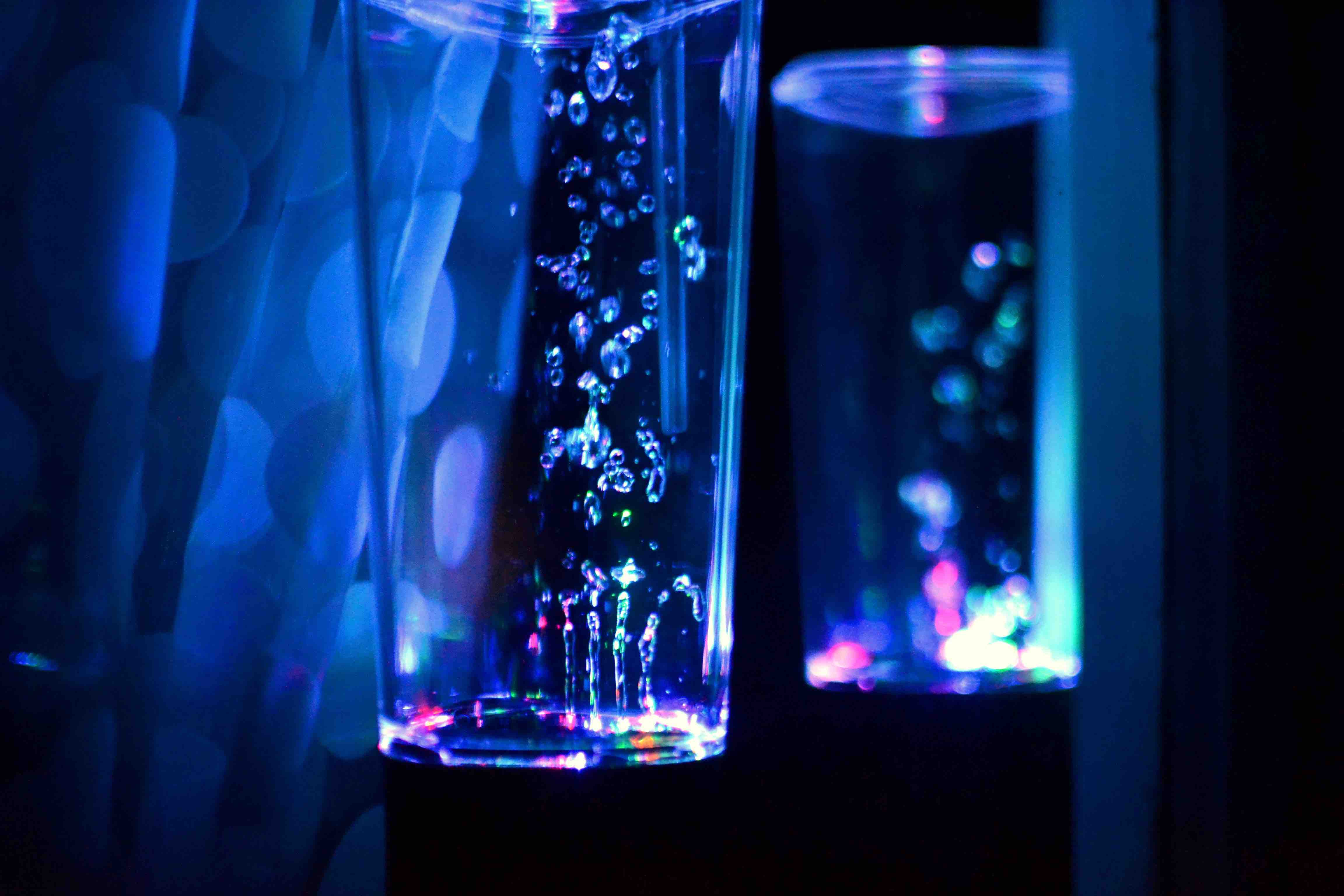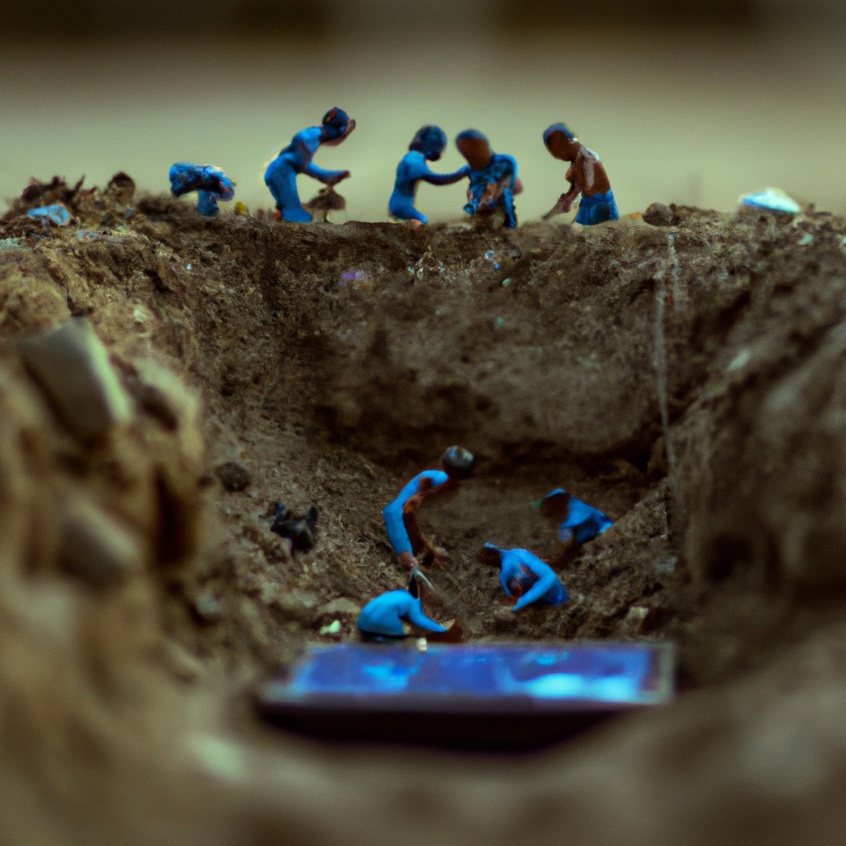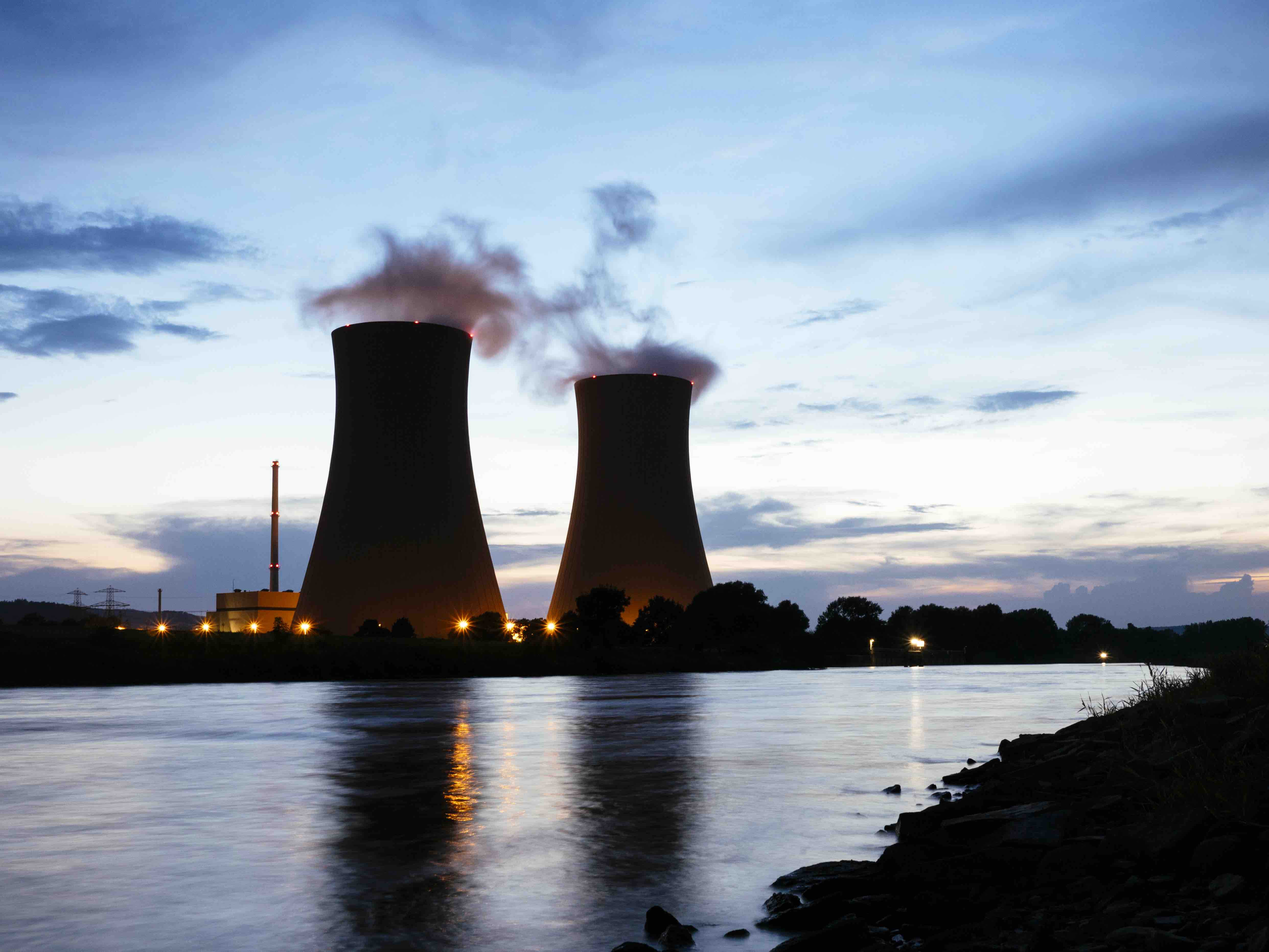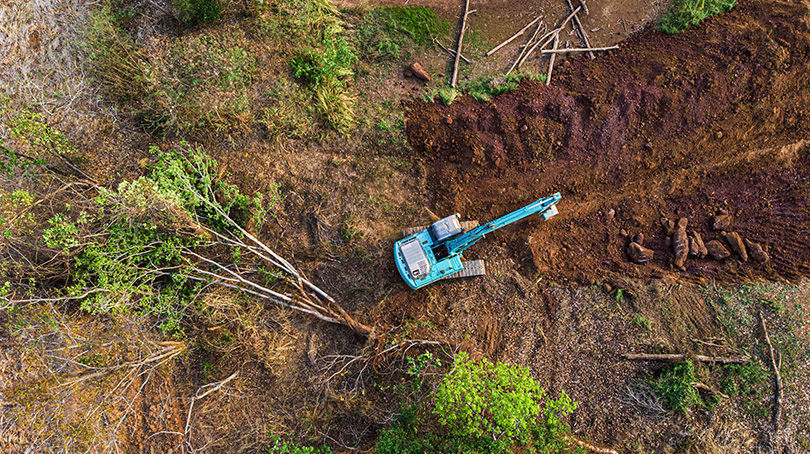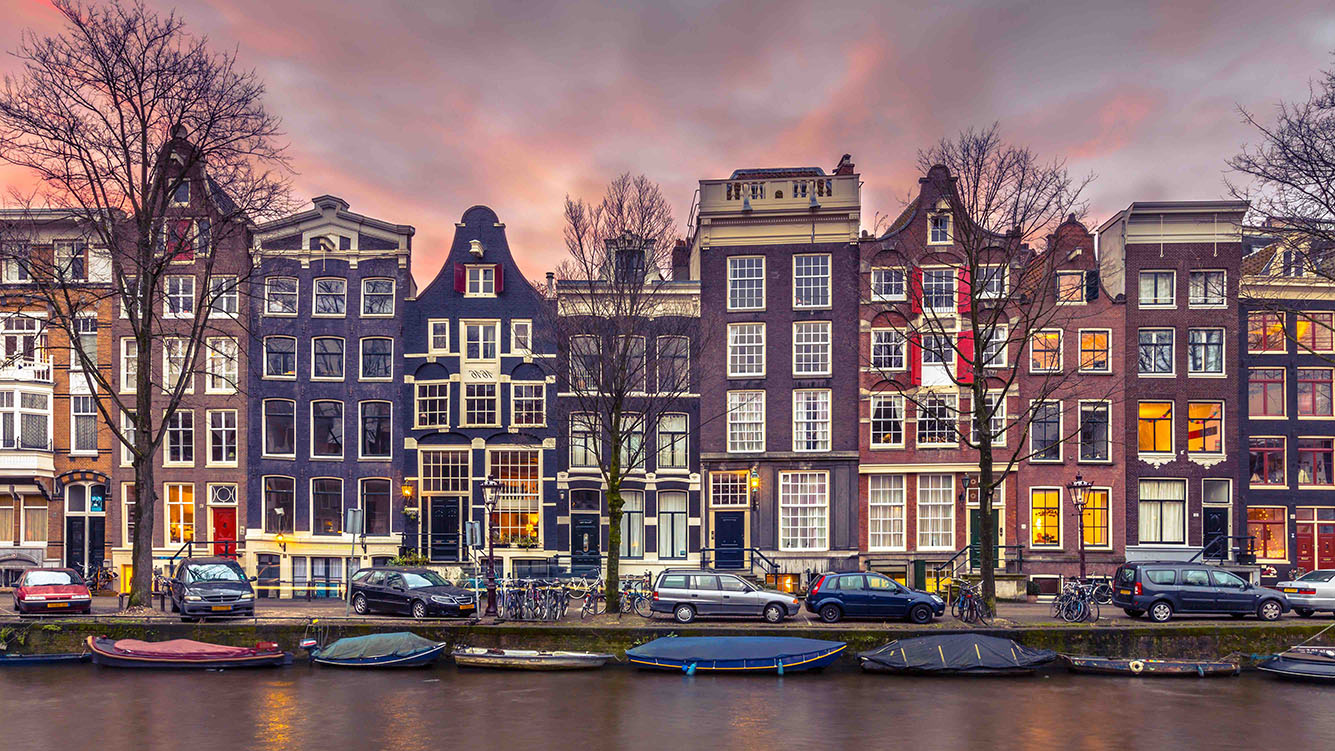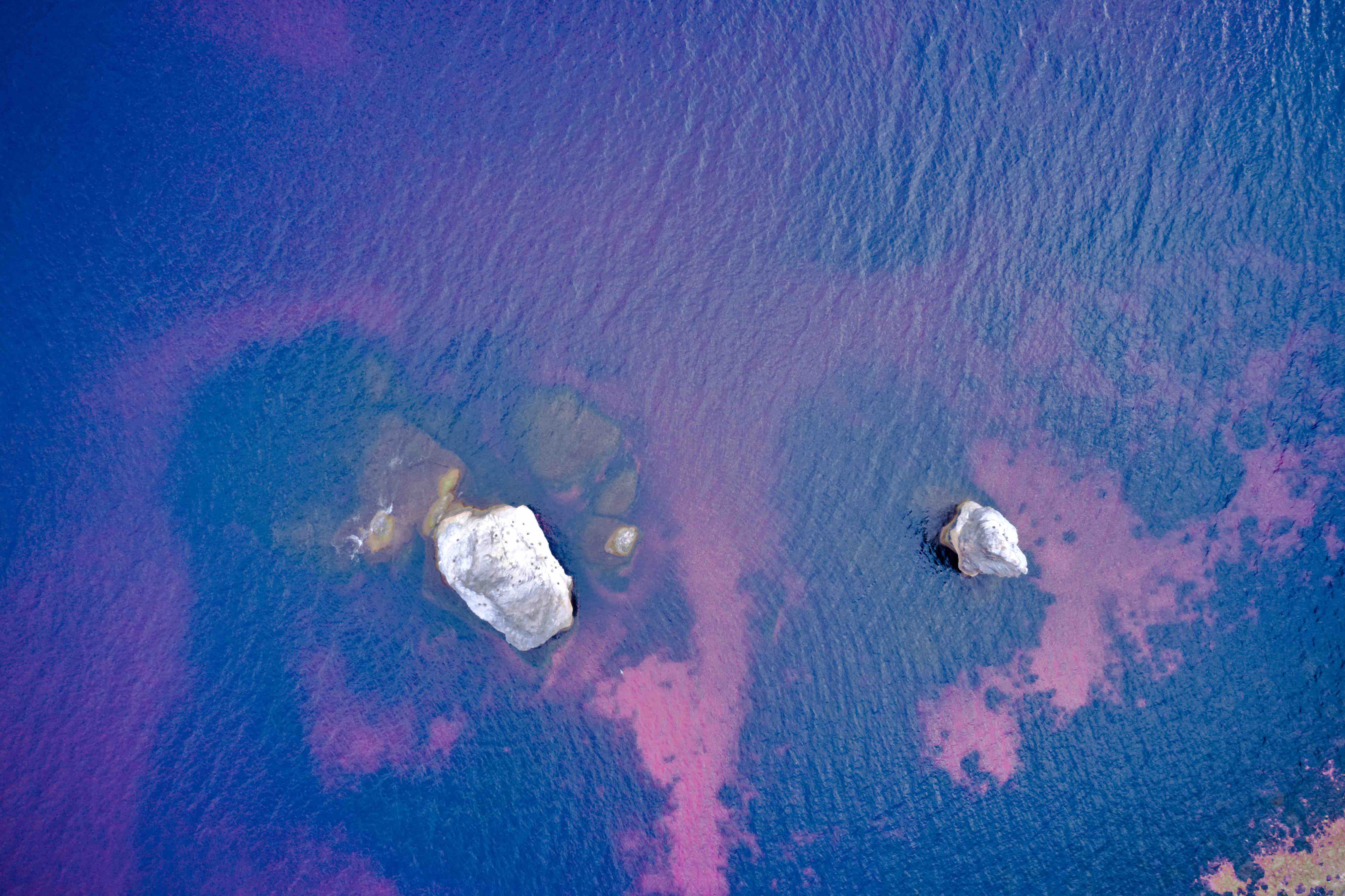
Oil, chemicals, and sewage have been discharged accidentally or on purpose into the ocean in the past. These breaches have had devastating effects on marine life, ecosystems, and the welfare of those who depend on the ocean for a living. While the aforementioned are visible and readily detected, recently a team from the University of Washington discovered a leak deep down in the ocean floor.
Tagged “Harbinger of Doom”, scientists are concerned that the leak in the Pacific Ocean’s floor could trigger “The Big One” that would be one of the strongest earthquakes in U.S. history and has been a source of dread in the Pacific Northwest for years. The hole is about 80 km off the coast of Oregon. It is on the Cascadia Subduction Zone fault line, which is 965 km long and goes from northern California to Vancouver Island. Although these seeps are hard to locate, experts think that there may be others nearby.
What is “The Big One”?
The term “The Big One” refers to a potential earthquake of magnitude 8 or greater that is projected to strike along California’s San Andreas Fault. The San Andreas Fault is a tectonic barrier between the Pacific and North American plates, and earthquakes in California are caused by seismic activity along this fault.
Formerly considered to be water, a new study published in Science Advances reveals the leak is actually spewing warm tectonic lubricant.. This “fluid” from the hole has a different chemical makeup than seawater. It is 9˚C warmer than the surrounding water, and is apparently coming from the Cascadia megathrust (the boundary between two tectonic plates), where temperatures are estimated to be between 150˚C and 260 ˚C. Underneath the surface of the Pacific Ocean, near the Washington–Oregon border, bubbles wrapped in methane hydrate have been observed growing to great heights.
It was in 2015 that researchers from the University of Washington first investigated the source of the bubbles and discovered an underwater spring that shoots chemically different water up from the seafloor. The team came up with the name Pythia’s Oasis for the first-of-its-kind find. It is a fitting name for this occurrence because it was the ancient Greek Oracle of Delphi whose “prophecies” were actually hallucinations brought on by gasses emitted from the hot spring underneath his temple. Given the subterranean origins of this warm liquid, the team hypothesizes that this leak plays a role in “prophesying” Earth’s ever-changing tectonic activity.
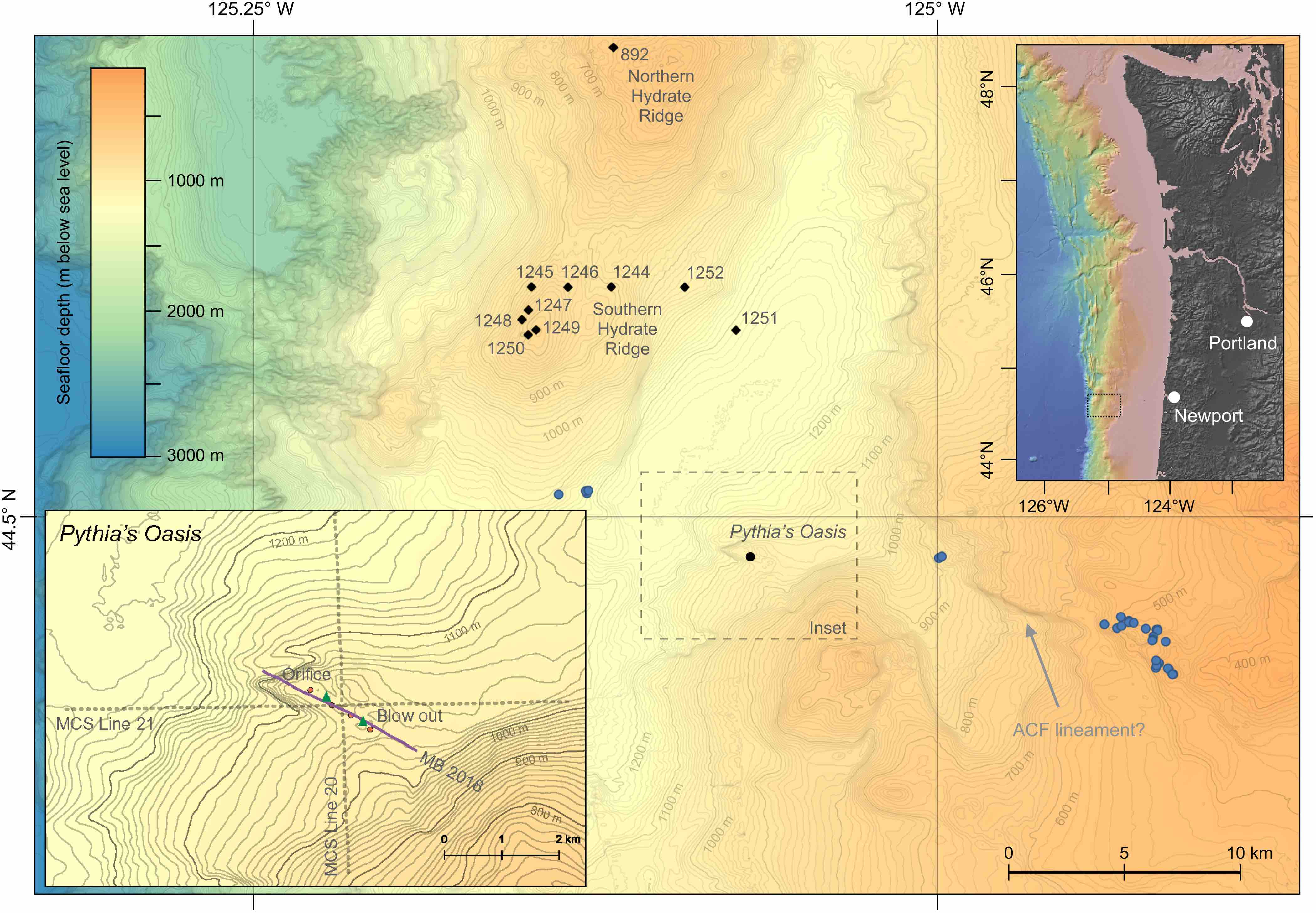 Map of Pythia’s Oasis and surrounding features (Fluid sources and overpressures within the central Cascadia Subduction Zone revealed by a warm, high-flux seafloor seep). Courtesy of Science Advances
Map of Pythia’s Oasis and surrounding features (Fluid sources and overpressures within the central Cascadia Subduction Zone revealed by a warm, high-flux seafloor seep). Courtesy of Science Advances
The discovery was made while waiting for the oceanographic research vessel RV Thomas G. Thompson which was held up by bad weather. Around 0.7 miles below the surface of the water, the ship’s sonar picked up unusual bubble plumes. After additional research with an underwater robot, the bubbles were discovered to represent only a minuscule component of the warm, chemically distinct fluid flowing from the bottom dirt.
The warm substance is probably a mix of minerals and fluids that come out of the Earth’s mantle when tectonic plates move. It keeps the plates moving by lubricating them and making them easier to move. If the function is to act as a lubricant between the tectonic plates, then it is swiftly disappearing.
Given that this breach was discovered in 2015, it has been leaking for quite some time, which could result in a magnitude-9 earthquake that could have devastating effects on Seattle, Portland, and Vancouver. The worrying part is that locating this sort of leak from over the Pacific Ocean is rather difficult.
The million-dollar question: “Can the hole be sealed?”


